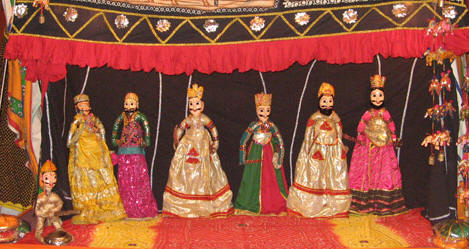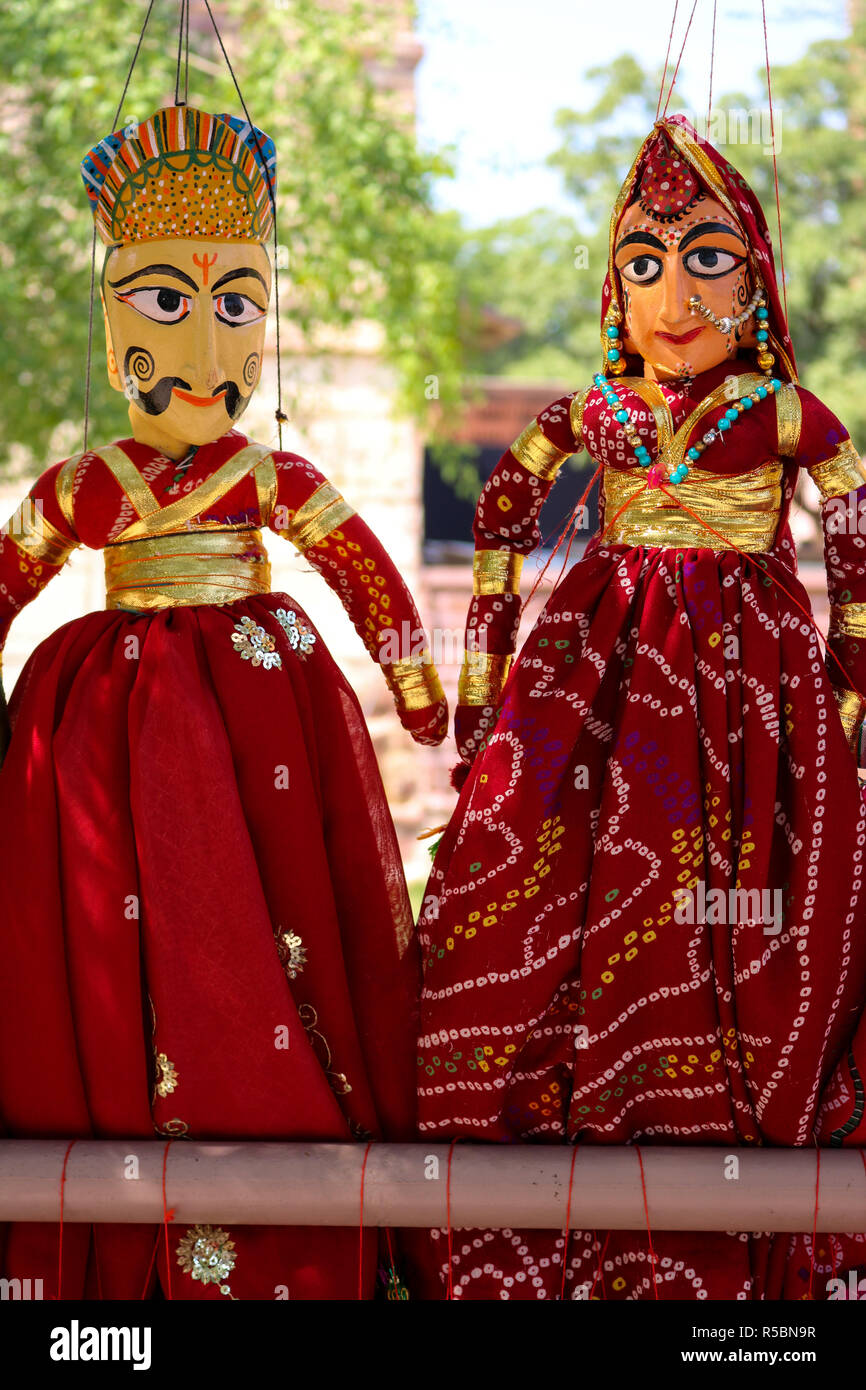
Introduction:
Kathputli puppetry, a traditional string puppetry, is one of the most prestigious and revered art forms of Rajasthan’s cultural heritage. It is best known for its traditional marionettes, which are single pieces of wood that are shaped later in the form of dolls, and afterwards they dress them in colorful attire. It has been the medium of narration of stories and social commentary for generations
Historical Roots
Kathputli is a traditional and ancient craft of Rajasthan. The word “kathputli” is believed to be derived from “kaath,” or wood, and “putli,” or toy. The puppeteers, as a community belonging to the tribal Bhat community, played and gained favor and patronage of the royal courts.
The patrons took care of the artists in exchange for the artists creating eulogies of the ancestors of the patrons until the Mughal invasion, which resulted in a change of taste and demand for the craft.

So the artists, or Bhats, were turned into genealogists. Descendants of the Bhats, or Nat Bhat (play-performers) today still follow the nomad’s lifestyle that their forebears had, traveling from village to village in groups performing plays reciting local

story, myth and legend.
The art behind the curtain: Craftsmanship and design
A Kathputli puppet is usually 30 centimeters or 1 or 2 feet long tall and made from a single block of wood, preferably mango wood. The heads are carefully crafted with stylized eyes and decorated faces.
The bodies are made of cloth and filled with cotton, and most do not have legs, with long skirts hiding this aspect. They are hung from strings, making the puppeteer easily control them.
Performance and Storytelling
Kathputli performances are a fine blend of drama, music, and dance. The strings are worked on by the puppeteers so skillfully that the puppets on stage come alive, enacting mythological epics to contemporary social issues. Using traditional instruments like dholak, harmonium, and khartal, the performances are pleasing to the eyes as well as the ears.
A standard performance occurs in the background of a miniature set made of colorful cloth and bamboo structures, covering the puppeteers from public view. The puppets are brought to life by the puppeteer through expert handling.

of strings to create realistic movements, augmented by dramatic changes in voice tone, folk music, and traditional instruments such as the dholak and sarangi. The puppets’ voices are typically created with a bamboo reed called a boli, which provides the characters with a high-pitched comic tone.
The tales narrated in Kathputli performances are deeply embedded in folklore, myth, and history. These include the exploits of hero Rajput kings, legends like Amar Singh Rathore, and love epics like Dhola-Maru. These are combined with social commentary and moral lessons so that the performances are not just engaging but also intellectual.
Motifs in Kathputli Puppetry:

1. Royalty and Heroism: The puppets tend to enact kings, queens, warriors, and mythical heroes.
Costumes and jewelry imitate royal wear to highlight valor and majesty.
2. Animals and Nature: Camel, horse, snake, and peacock motifs are abundant, a reflection of Rajasthan’s desert culture.
Nature is presented symbolically, with frequent reference to popular beliefs.
3. Traditional Attire and Culture: Vibrant colors, turbans, ghagras, and intricate embroidery symbolize Rajasthani dress and culture.
Musical Instruments: Artifacts such as the sarangi (employed in performances) manifest themselves as visual or thematic motifs.

Themes and narratives of Kathputli Puppetry:
Good vs. Evil: Traditional stories where good characters defeat the bad reflect moral and ethical teachings.
Folk Myths and Legends: Ramayana and Mahabharata epics and local folk like Amar Singh Rathore are well-liked.
Social Commentary : Certain performances tackle issues such as poverty, injustice,
and gender roles in a veiled manner through satire and narrative.
Celebration of Culture and Community : Themes of village life, festivals, and marriage reinforce unity, tradition, and happiness.
Loyalty and Bravery: Widespread in warrior stories and royal stories, affirming cultural values

Cultural Significance
Kathputli puppetry is a mirror to Rajasthani society, reflecting its values, struggles, and dreams. In the past, it was a means of social commentary, addressing issues in the community discreetly.
The art form also served to document oral traditions, with the puppeteers functioning as genealogists and storytellers, retelling histories and legends through generations.
Modern Adaptations
Today, Kathputli puppetry incorporates new themes and technologies. Cultural centers such as Bagore Ki Haveli in Udaipur and Jawahar Kala Kendra in Jaipur stage frequent Kathputli performances, combining traditional puppetry with contemporary modes of storytelling.
Both centers also feature workshops where one can experience the art form firsthand. In ancient Indian philosophy, the puppet metaphor is found in writings such as the Bhagavad Gita, where Lord Krishna discusses human beings as instruments of some superior cosmic plan.
In this context, the puppet stands for the ego-less player, and the puppeteer is the divine manipulator, stressing duty (dharma) rather than personal desire.

Modern-Day Revival
In recent times, there have been attempts to revive and popularize Kathputli. Organizations such

as the Bhartiya Lok Kala Mandal in Udaipur and the Jawahar Kala Kendra in Jaipur have played a significant role in conducting workshops, performances, and festivals specifically organized for this art form. These forums give a platform to traditional puppeteers to demonstrate their art and the younger generation to learn and appreciate the art.
Conclusion
Kathputli is not merely a method of puppetry; it is an expression of Rajasthan’s great cultural heritage and a testament to the resourcefulness and ingenuity of its people. So long as there are tellers of tales and puppeteers to animate them, Kathputli will cast a spell upon spectators, guarding the evergreen traditions of Rajasthan forever.
Apart from entertainment, Kathputli is also a medium of social commentary. Issues such as empowerment of women, education, and conservation of the environment are frequent topics woven into the narrative. The art form is also used to maintain the traditions, customs, and values of Rajasthan, which gives a glimpse into the rich cultural heritage of the state.
References
https://pathbeat.in/blogs/uncover-the-kathputli-show-rajasthan-all-you-need-to-know/
https://www.bergerpaints.com/blogs/colour-magazine-september-2017
https://gaatha.org/Craft-of-India/jaipur-kathputli-making-craft




